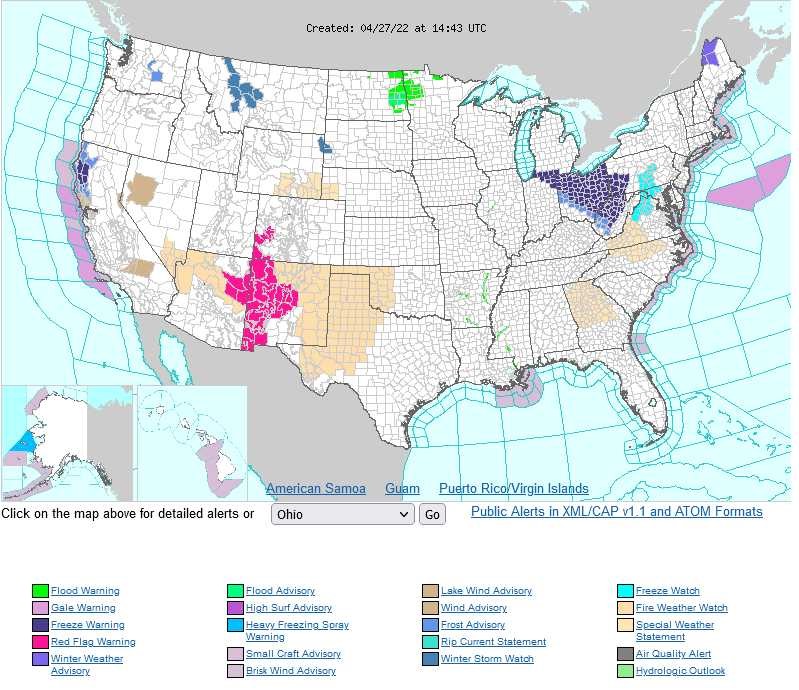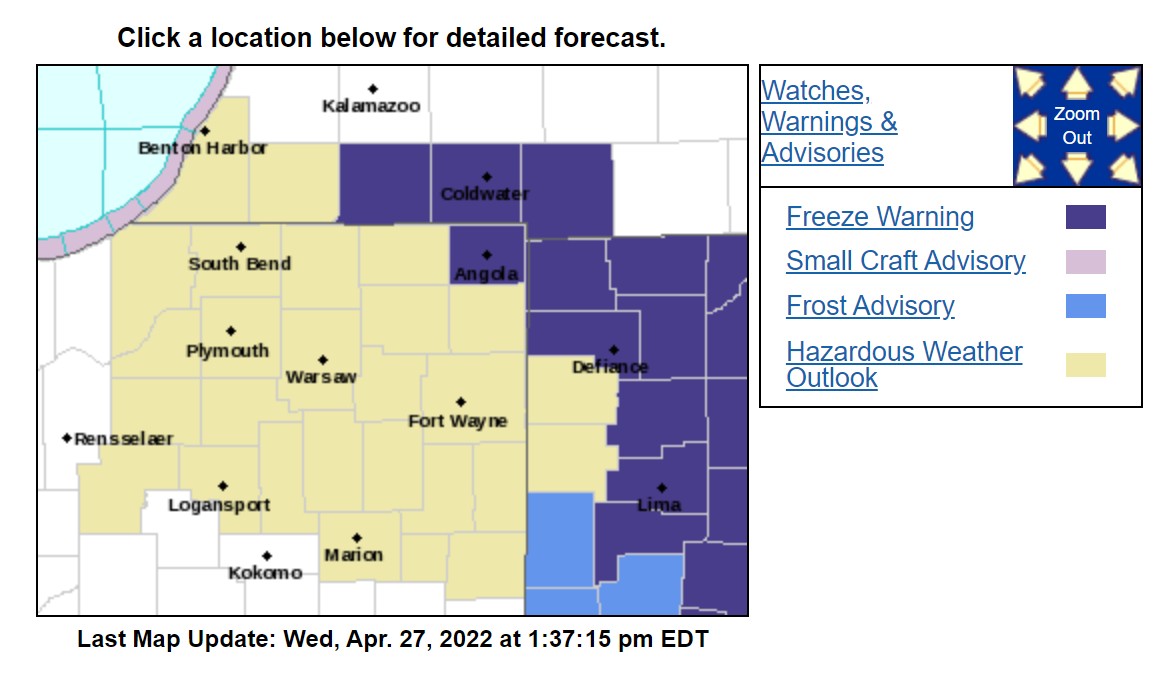Cold temperatures throughout March and April have led to delays in grapevine phenology ranging from 7-14 days behind normal. Generally speaking, later bud break reduces the risk of spring frost damage. However, warm weather over the weekend has progressed bud development greatly. Buds are in various stages of growth across the state, ranging from bud break to 4-5 inches of shoot growth in Southern parts of the state. A freeze warning is now in effect for Northeast Indiana and Ohio this week. See Figures 1 & 2.

Figure 1. Freeze warnings and forecast temperatures in the United States on April 27, 2022; source: https://www.weather.gov/

Figure 2. Freeze warnings and forecast temperatures in Northern Indiana on April 27, 2022; source: https://www.weather.gov/
The critical temperature, or the temperature at which damage can occur, ranges from 30° F for shoots with three leaves to 28° F for varieties at bud break.
Preventing frost damage prior to freeze event:
-Double pruning: Double pruning is a practice that involves pruning back to 2-3x the desired number of buds in the late winter/early spring, then pruning back to desired bud count at or around bud break. This method delays the growth of basal buds via apical dominance.
-Delayed pruning: Pruning encourages shoot growth, so the later pruning occurs, the more delayed phenology will be and the more protected buds are from cold injury
-Cover Crop Management: Bare soils absorb more heat and are warmer than soils with a cover crop; if grass or a cover crop is present, mow to <2 inches to maximize heat absorption
Preventing frost damage during a freeze event:
-Wind machines: Wind machines can be effective if an inversion layer is present; in this case, wine machines can increase the temperature by 50% of the temperature difference
-Overhead irrigation: Using overhead irrigation during a frost event can prevent frost damage by retaining the temperature of the plant tissue at ~32° F because a small amount of heat is released when water freezes; be advised that severe damage may occur if this process is not executed properly
For more information:
Understanding and Preventing Spring Frost and Freeze Damage to Grapes, Penn State University Extension
Grapevine Frost/Freeze Damage I: Background and Prevention, University of Maryland Extension
Prevention and Management of Frost Injury in Wine Grapes, North Carolina State Extension